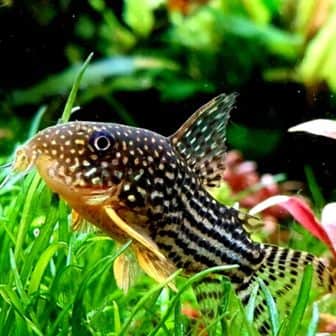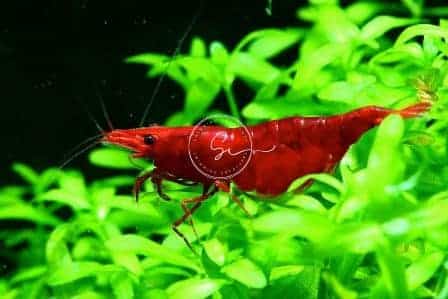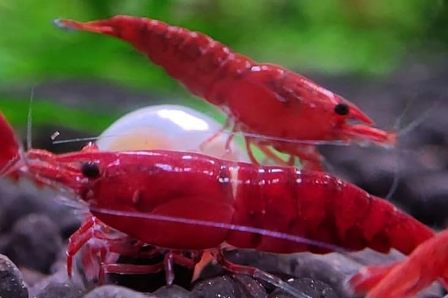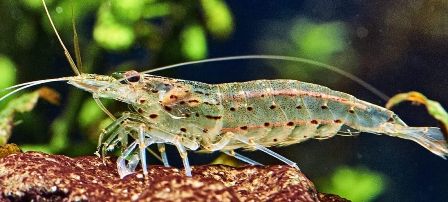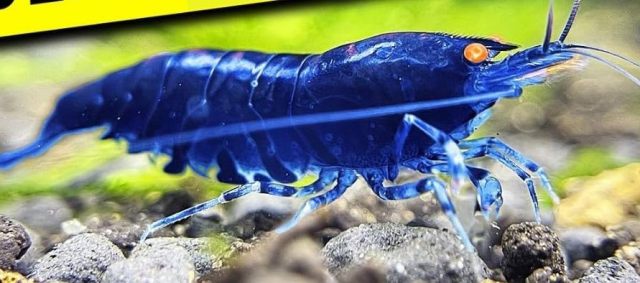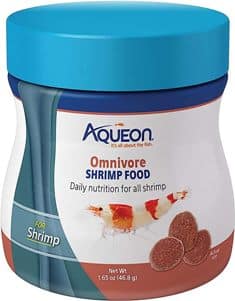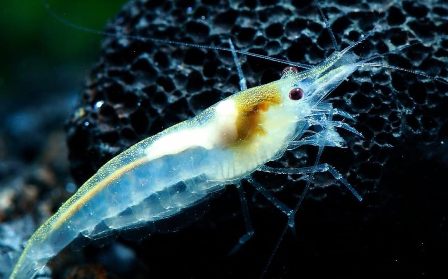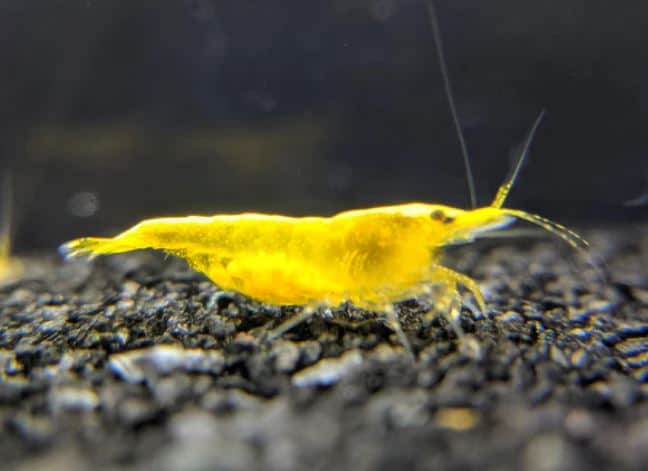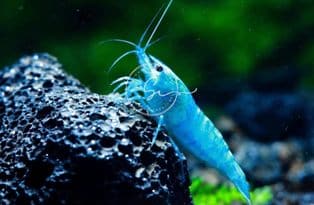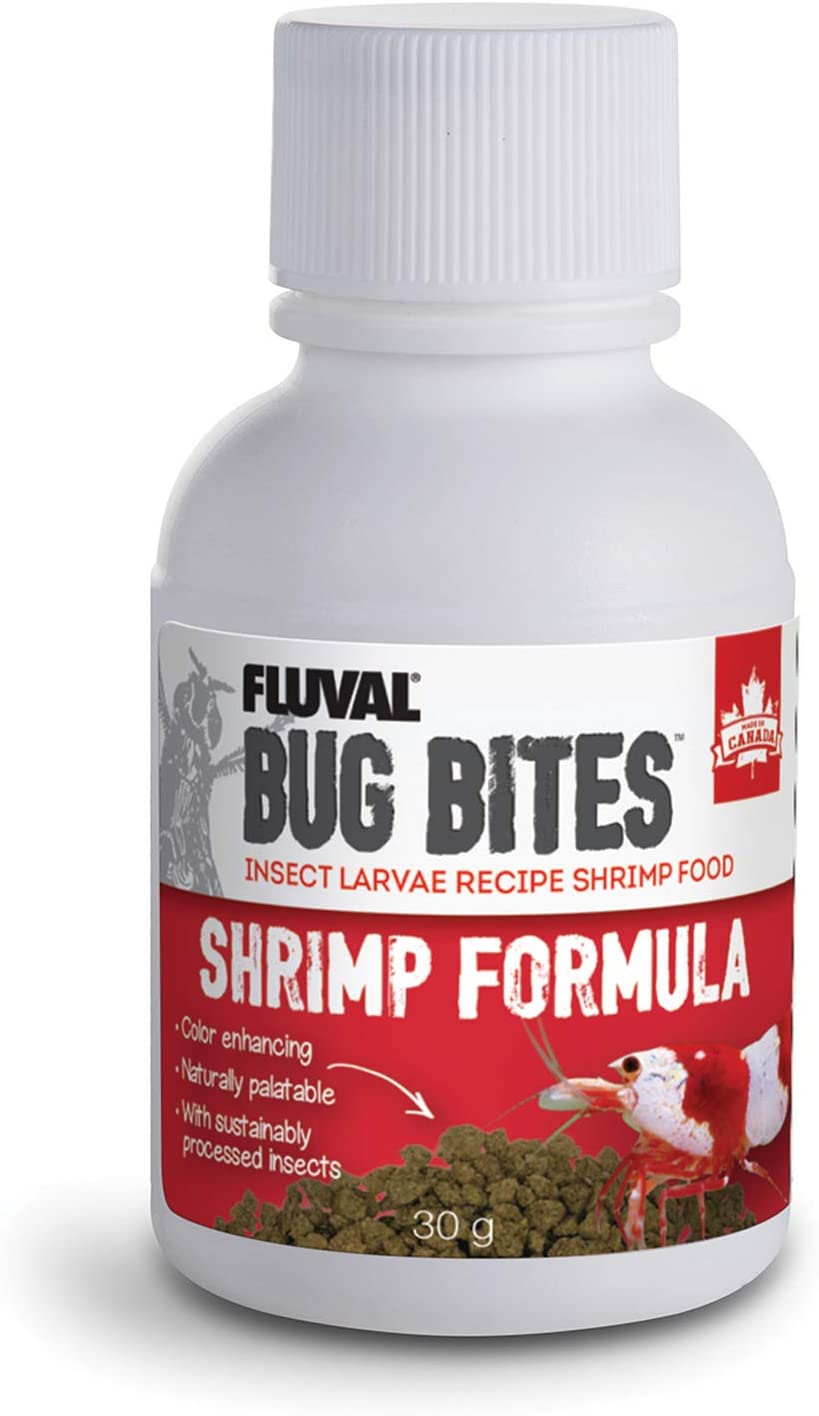Shrimply Irresistible: A Visual Guide to 21 Popular Freshwater Shrimp Species

On this page you’ll get information on 9 freshwater shrimp species plus you’ll see 12 additional color variations photos.
About these shrimp photos…
You can use the photos on this page if desired. If you do so, please provide a link and atribution back to my page: Planted Aquarium Expert: Shrimp
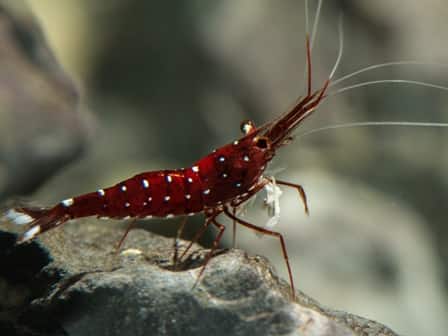
Cherry Shrimp
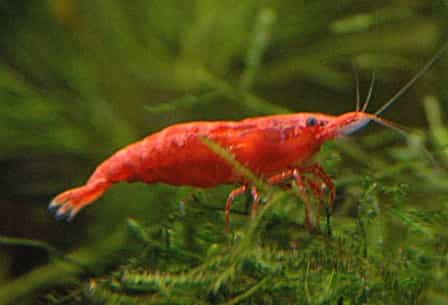
Bright Red Female Cherry Shrimp image provided by Swimming Creatures store on Amazon
View their other available shrimp by tapping here.
Description: Cherry Shrimp are the industry standard. They are one of the most common types of freshwater shrimp, and they are perfect for a nano tank.
They grow to not more than 1.5 inches and are easy to keep and breed.
They also come in various colors that range from the most intense red to stunning blues and greens. Finally, they are readily available and can be purchased quite easily.
Care and feeding: As we mentioned, they are hardy and will tolerate a wide range of temperatures and water parameters. However, they need to be given a stable environment to really thrive and breed well. They do show their best coloration within a specific range of conditions, as mentioned below.
Feeding: As far as feeding goes, these shrimp are hassle-free. Cherry Shrimp will feed on biofilm and algae that naturally form inside the aquarium. You can supplement their diet with commercially prepared shrimp food or blanched carrots and zucchini.
Water conditions: Cherry shrimp require water temperature between 77º F and 81º F or 25º C and 27º C. The pH should be between 6.2 and 7.3. Ammonia and nitrites should be kept to 0 ppm, while nitrates should be less than 20 ppm.
Ease of keeping: Easy to intermediate
—————–
Amazon price check for these freshwater cherry shrimp:
Keeping freshwater shrimp or fish can be costly, but there’s a great way to offset those expenses.
Consider creating your own website, just like I did with this one! I advertise Divi website creator, but you could place other ads on your website.
I’ve used Divi website builder to build this site, and it’s incredibly user-friendly. With its drag-and-drop interface, creating your own website becomes a breeze.
Simply tap this box to get started and see how easy it is to create a website with Divi.
Divi cost is $89/year. This is about the same cost as buying these ebay shrimp:

Divi comes with a 30 money back guarantee. Try it witth no risk.
Take this box to visit the Divi website to learn more. The link opens in a new window.
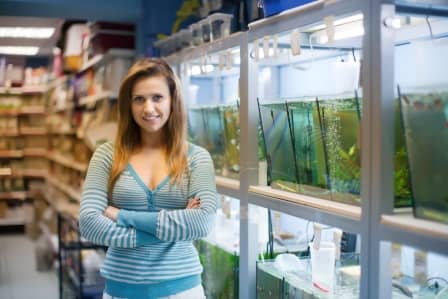
Experience These Article in Audio Using Your Browser!
If a system or browser is not mentioned here, the I haven't been able to find out how to make the system or browser work to read aloud.
PC's: Using the Edge Browser, left click on the article text and scroll down to "Read Aloud." The article will automatically be read to you.
iPhone using the Edge Browser: Using the Edge brower, tap the icon that looks like a book with a speaker located in the in the address bar. The article will come up now showing 4 icons on top. Tap on the second icon from the right to have the article read to you.
Android phones: Google Assistant is the most convenient way. Say, "Google, read this page."
Ghost Shrimp
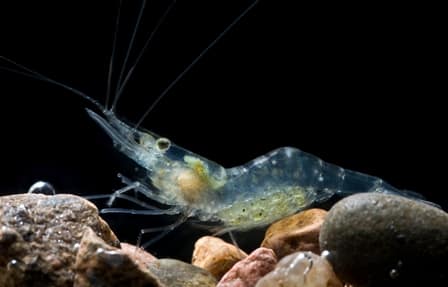
Description: Ghost Shrimp might be the easiest freshwater shrimp to keep. As the name suggests, they are ghost-like and have an almost transparent bodies. They also do a great job as cleaners and can be added to community tanks with suitable tankmates. They are very cheap and can be used to familiarize yourself with keeping shrimp.
Care and feeding: Caring for this shrimp is effortless. The only time it is vulnerable is when it is born. Unlike other shrimp, it has a larval stage at which it has few chances of surviving in a tank with other fish. Once they reach adulthood, care is straightforward. They are pretty resilient and will eat any leftover food and detritus. If it is a shrimp-only aquarium, then you can offer them any number of sinking food.
Water conditions: As I alluded to before, this shrimp is not very fussy when it comes to water conditions. It can tolerate temperatures between 70ºF and 80ºF or 21º and 26.5ºC. Ghost Shrimp require slightly alkaline water with a pH between 7.0 and 7.8. As long as conditions do not fluctuate rapidly, ghost shrimp can adapt to values somewhat less or more than these numbers. The usual cautions for ammonia and nitrites apply.
Ease of keeping: Easy
——————————————————–
Live Freshwater Ghost Shrimp. Amazon price check link:
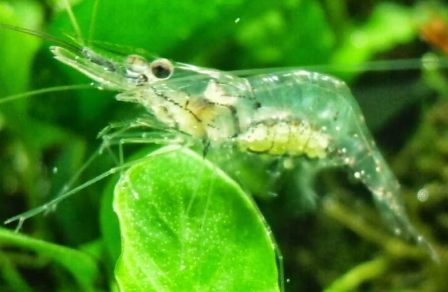
Panda Shrimp
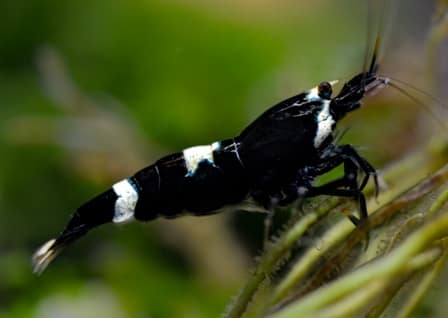
Description:
This one is for those who want something a bit different and exclusive. It is not that readily available and until recently was very expensive. It is a shrimp covered in black and white stripes with a certain degree of translucency to them.
Care and feeding:
The Panda Shrimp is a result of years of selective breeding and that makes it a bit more fragile. They are very sensitive to changes in water parameters and the best way to avoid any complications on this front is by keeping them in a larger tank. They also do not breed very quickly which means that they can’t maintain a stable colony all on their own. It certainly is a challenging shrimp to keep, but that is the price of exclusivity. They eat biofilm and algae. Their diet can be supplemented with blanched vegetables.
Water conditions:
This shrimp can tolerate low temperatures and does well as long as the temperature is maintained at a stable value between 62ºF and 75ºF or 16.5ºC and 24.5ºC. pH can be maintained between 6.0 and 7.5. As you can see, it can tolerate a wide range of values but the values at which the shrimp has been accustomed to should be maintained as any swing in the parameters even within this range can prove fatal. Ammonia and Nitrites should be totally absent while Nitrates should be kept south of 15 ppm.
Intermediate to difficult.
——————————-
Put some Panda Shrimp in your aquarium.
Tap here or the image to go to the Amazon seller.
Yes, these bad boys are for sale.
Blue Bolt Shrimp
Description:
If you want your aquarium to really pop then you cannot go wrong with the Blue Bolt. It lives up to its name in every sense and is spectacularly eye-catching thanks to its brilliant blue coloration. It can be hard to find but it is worth going the extra mile to procure them.
Care and feeding:
This one too is a product of years of selective breeding and it too is a bit fragile. It requires the water conditions to be just right. Since this is a rare shrimp, it is best to keep them in a species only tank as they can interbreed with other shrimp and the colony can lose its striking physical attributes. Breeding them amongst themselves is difficult though. Feeding, however, is easy and they live on biofilm and algae and can be treated to blanched vegetable once in a while.
Water conditions:
This shrimp also does not like changes. It can tolerate a wide range of parameters but once it is accustomed to a certain value, that value must be maintained fastidiously. Temperature can be between 65ºF and 75ºF or 18ºC and 24ºC. pH should be between 6.0 and 7.0 with acidic water being preferred. Water changes should be done regularly as this shrimp is very sensitive to ammonia, nitrites and nitrates.
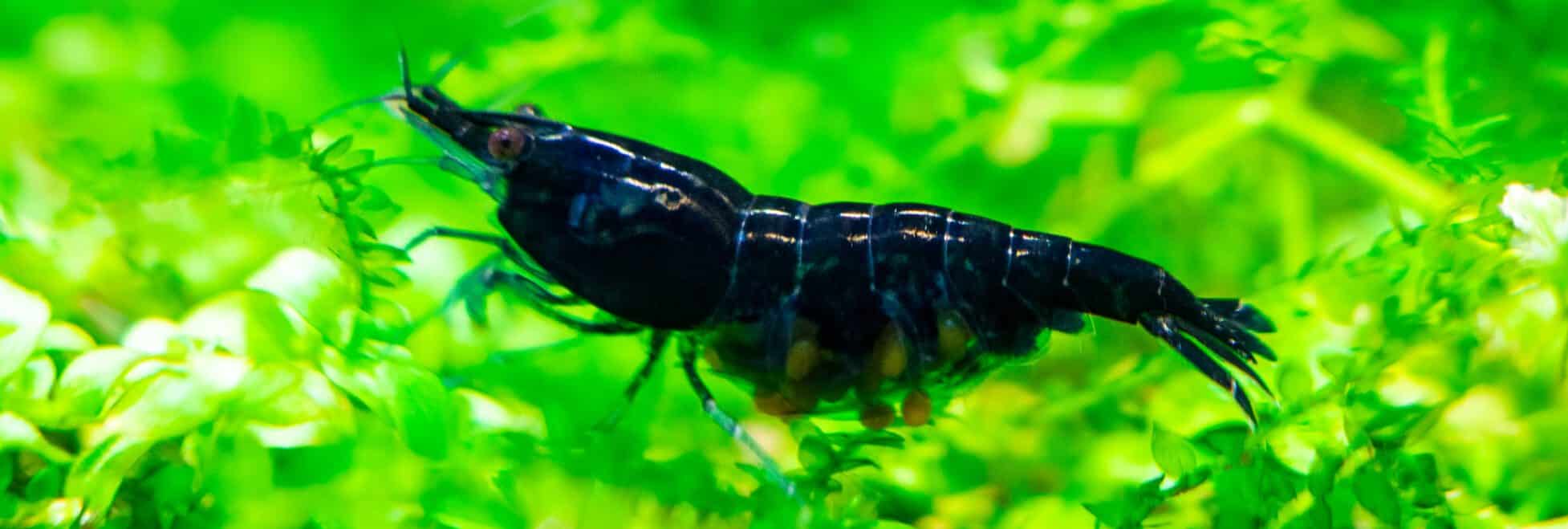
Ease of keeping: Difficult to very difficult
How To Take Aquarium Photos

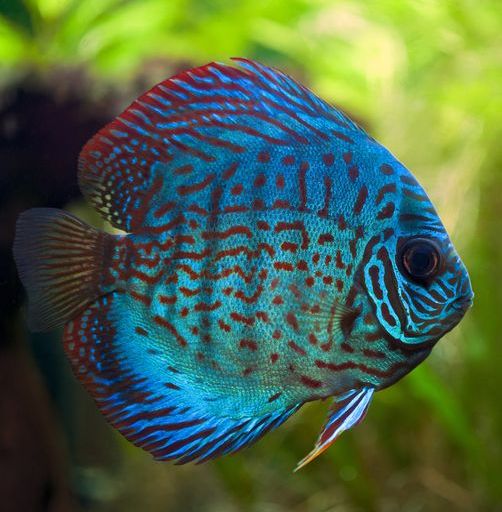
Amano Shrimp
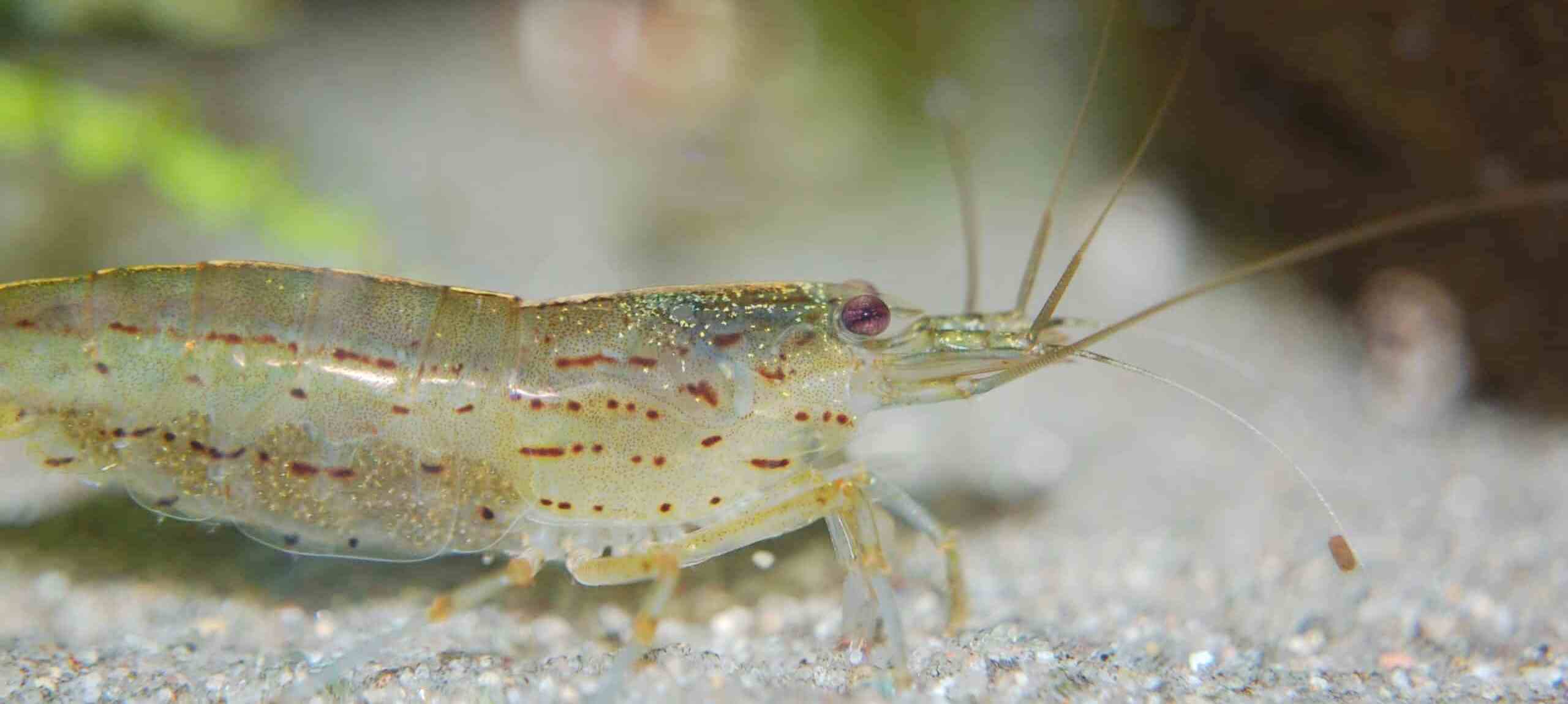 Amano Shrimp – You may use this photo on your website. Please provide a link back to this page.
Amano Shrimp – You may use this photo on your website. Please provide a link back to this page.
Description: Unlike the other shrimp on this list, Amano shrimp isn’t a dwarf shrimp and can grow as big as 2.5 inches in length. That is huge for a nano aquarium but if you want something substantial in your tank this might be the way to go. They are one of the most popular shrimps and one of the best algae eaters in the business. They look darn cute as well.
Care and feeding: This is one of the easiest to care for shrimp and if this is your first nano tank then these shrimp are a great option. Amano Shrimp are hardy and can tolerate a wide range of conditions. They feed on algae than naturally forms in the aquarium. You can supplement that with algae wafers or pellets as well. The only downside is that they are almost impossible to breed as the larval stage requires brackish water.
Additional information about Amano shrimp (Caridina multidentata) – Wikipedia
Water conditions: They aren’t very fussy about water parameters as long as they do not vary wildly. Temperature can be between 65ºF and 85ºF or 18ºC and 29.5ºC. pH can be between 6.5 and 8.0. Because they fairly large for shrimp, Frequent water changes will be needed in a small aquarium to avoid the build-up of waste matter.
Ease of keeping: Easy
U.S. Government study on ecological risk of introducing Amano Shrimp into the U.S.
—————-
Buy Amano Shrimp from this Amazon seller (Tap link or image):
Blue Tiger Shrimp
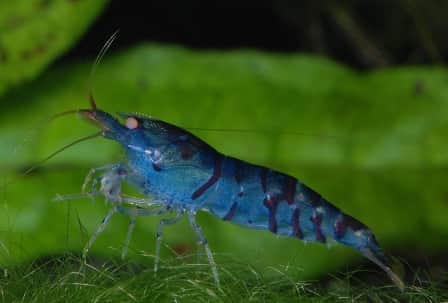
Description: There’s something about the color blue that makes it so alluring. It is also something that is challenging to come across in the freshwater hobby. However, The blue tiger shrimp fills that niche up nicely. It has a beautiful blue coloration with black stripes.
Care and feeding: This too is a shrimp that needs a bit of extra care. This shrimp is a bit different because it is omnivorous and requires a balanced diet of plant and animal matter. It is best to feed them commercially prepared shrimp food. It is also important not to overfeed them as any uneaten food can result in a change in water parameters which can be devastating.
Water conditions: The blue tiger shrimp requires very stable conditions. Temperature can be between 65ºF and 75ºF or 18ºC and 24ºC. pH should be between 6.0 and 7.5. The new owner of a shrimp nano tank should be cycled properly so that not even a whiff of ammonia or nitrites is present.
Ease of keeping: Difficult
————————————
Blue Tiger Shrimp available from Amazon. Tap here or the image for current price:
Aqueon Omnivore disc shaped food for your Shrimp
“These Omnivore Shrimp Discs are a protein-based food, ideal for shrimp in the Genus Caridina, such as Crystal and Bee Shrimp. Formulated with no fish meal to mimic a more natural diet and boosted with color enhancers and Bentonite Clay for exoskeleton development.”
Amazon price check link
Babaulti Shrimp
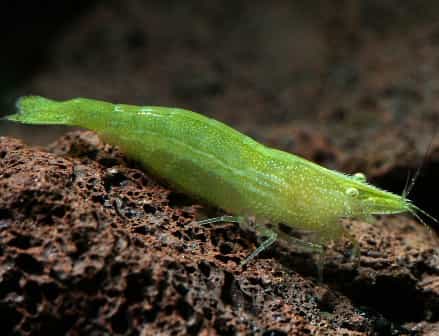
Image above: Probably Male, Babaulti shrimp. Please link back to this page if you use this image. Thanks!
Description: If you want to keep a shrimp that is easy to care for and looks like a grasshopper (green variety) then this is the shrimp for you. It comes in a variety of colors like red, yellow, brown, and green and all of them are pretty striking. It hasn’t attained the same level of popularity as some of the similarly easy to care for shrimp and that makes it a unique shrimp with minimum hassles.
Care and feeding: They are very easy to care for and can tolerate a wide range of conditions, and are tolerant to some mild fluctuations in the tank as well. They are omnivorous in nature and should be fed a balanced diet. An important quality of Babaulti Shrimp is that they are vociferous feeders of decaying plant matter and are great for planted nano tanks.
Water conditions: Temperatures can be between 65ºF and 85ºF or 18ºC and 30ºC. pH can be between 6.5 and 7.8. The usual cautions for ammonia and nitrites apply.
Ease of keeping: Easy
Image above: Probably Male, Babaulti shrimp. Tap picture for full size photo. Please link back to this page if you use this image. Thanks!
10 Blue Dream Freshwater Aquarium Shrimp
– Great quality and healthy lively shrimps with a great price!
Amazon price check link – opens in a new tab
Snowball Shrimp
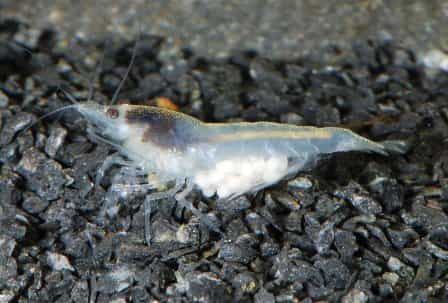
This snowball shrimp is provided by Amazon Swimming Creatures store.
Buy snowball shrimp from them by tapping here or the image.
Description: This one is for all the connoisseurs of white. They look surreal and what is even more remarkable is that care is pretty effortless. A nano tank with a dark substrate perfectly suits them. They are easy to breed, which means that maintaining a stable population isn’t that big a deal.
Care and feeding: These shrimp are hardy and resilient and do not mind the odd fluctuations in water parameters. They are pretty accepting, a nature that extends to their feeding habits. They can survive on detritus, decaying plant matter, and algae.
Water conditions: They can tolerate a temperature range between 65ºF and 85ºF or 18ºC and 30ºC and a pH of between 6.2 and 7.8. The usual cautions for ammonia and nitrites apply.
Ease of keepiing: Easy
Snowball shrimp for sale from an Amazon seller.
Tap here or image to view current price:
Cardinal Shrimp
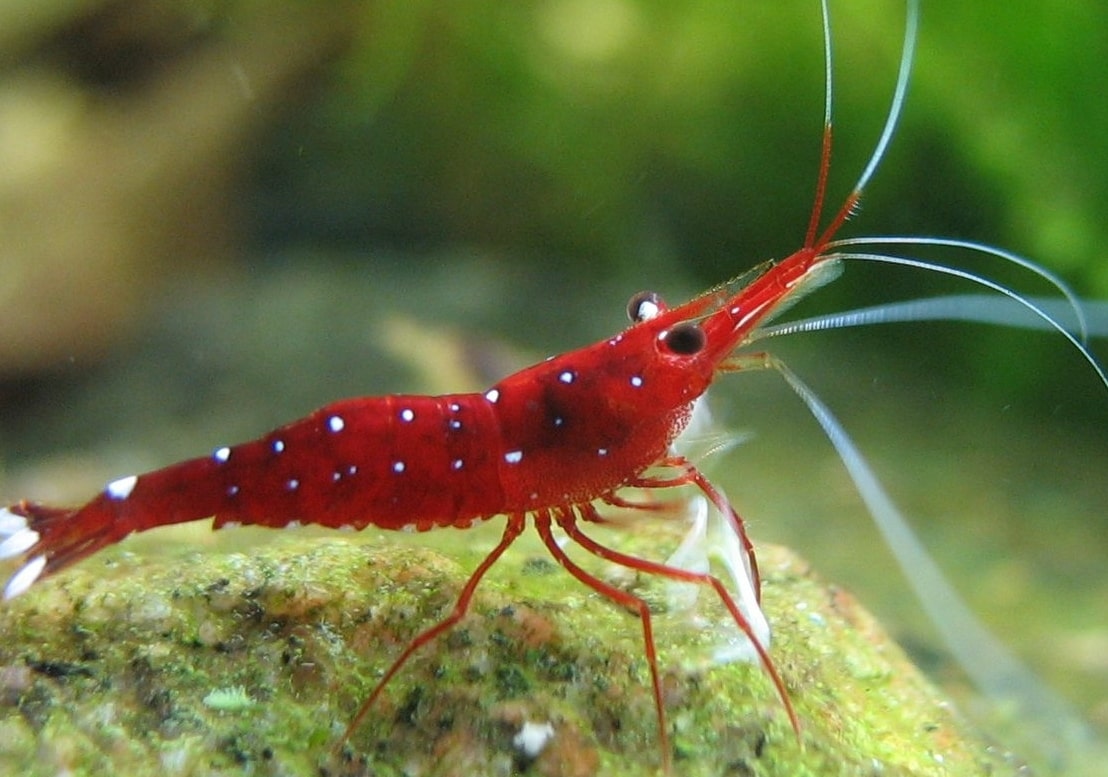
Description: If you have scrolled down this list and still aren’t satisfied, this is the shrimp meant for you. It is the most stunning freshwater shrimp that you can get for your nano tank. It’s so beautiful that any tank containing this would be doubted for a saltwater setup. The deep red, almost maroon coloration with blue and white spots is just stunning. Something this special does come with its conditions. It is one of the most delicate freshwater shrimps and not something meant for beginners or intermediates.
Care and feeding: It requires pristine water conditions and precise attention to detail. Everything has to be just right. They should be kept in a species only tank with hard water. All the parameters must be highly stable, which can be challenging in a nano setup, making this shrimp variation unique.
Water conditions: Temperature should be between 77ºF and 86ºF or 25ºC and 30ºC. pH should be between 7.5 and 8.5. The usual cautions for ammonia and nitrites apply.
Ease of keeping: Very difficult
————————-
Side note: More information about keeping aquariums in your home can be found in this article found on Redfin.com which opens in a new window. 14 In-Home Aquarium Ideas and How to Care for Them
——————-
Color variation
Image: Orange and White Shrimp
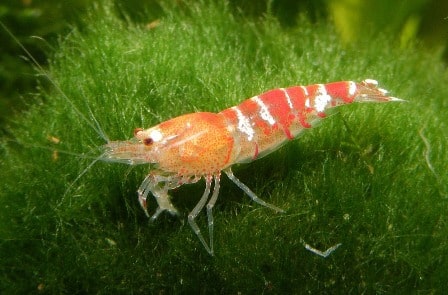
Images – Additional Color Variations
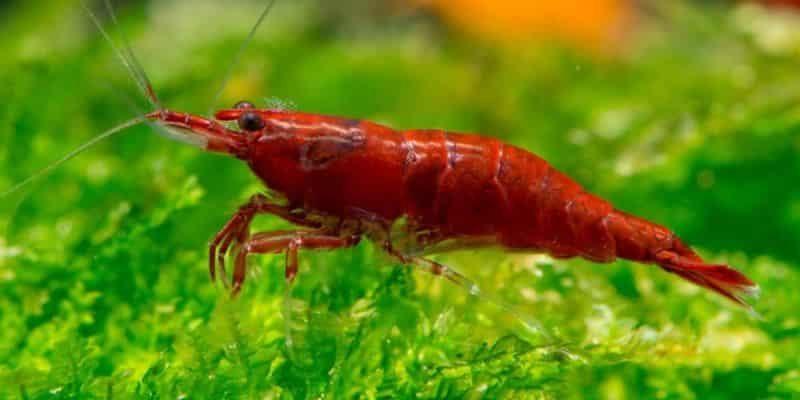
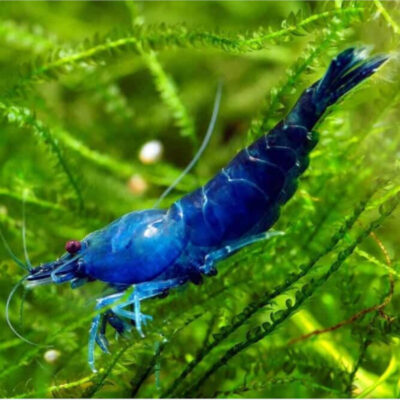
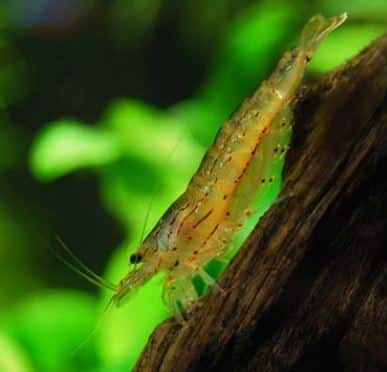
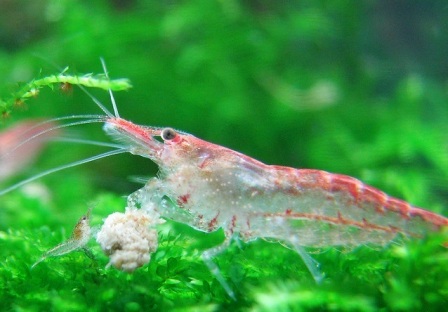
Fluval Bug Bites
Food for your shrimp
“Fluval Bug Bites is a complete fish food that features a unique insect-based formulation, enriched with multiple quality proteins and carbohydrates that are ideal for shrimp.”
Amazon price check link – opens in a new tab
Bonus: What should I feed my freshwater shrimp?
Freshwater shrimp are omnivores capable of consuming a variety of nutrients and minerals from a variety of foods. *Here are some types of food your shrimp would enjoy:
- Algae wafers
- Pollen
- Snowflake pellets
- Decaying plant matter
- Biofilm
- Fresh and frozen meaty foods
- Blanched vegetables
- Algae
- Herbaceous leaf litter
- Cuttlebone
- Prepared commercial shrimp food
* https://www.shrimpscience.com/articles/freshwater-shrimp-diet/
Mix it up when feeding your shrimps. Change out what you are feeding them often.
When in their natural habitat, freshwater shrimp primarily feed on algae, plant particles, dead fish, small insects, and other tiny creatures in the water.
In your aquarium, bloodworms, daphnia, and brine shrimp are among their favorite frozen foods.
If you are looking for dried prepared foods, I have included links to a few I found on Amazon.com.
Article was last updated November 19th, 2024
Hikari Tropical Shrimp Cuisine Fish Food, 0.35 oz
“Shrimp Cuisine has been scientifically developed after considerable research into the nutritional requirements of delicate and higher end shrimp and utilizes a wide range of ingredients, including vegetable matter herbivorous shrimp prefer like seaweed and spirulina.”
Amazon price check link – opens in a new tab
You can turn your aquarium fish hobby into an income producing side hustle.
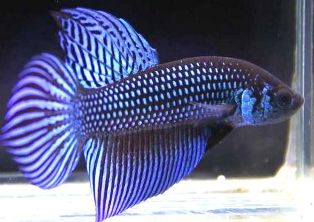
Create a website like mine to earn enough to buy aquariums, or fish, or equipment or if you work hard enough, retire from your 9 to 5.
I used "Divi" website creator to make this website. It costs $89/year (this comes out to about $7/month.)
Tap this ad to find out more.
